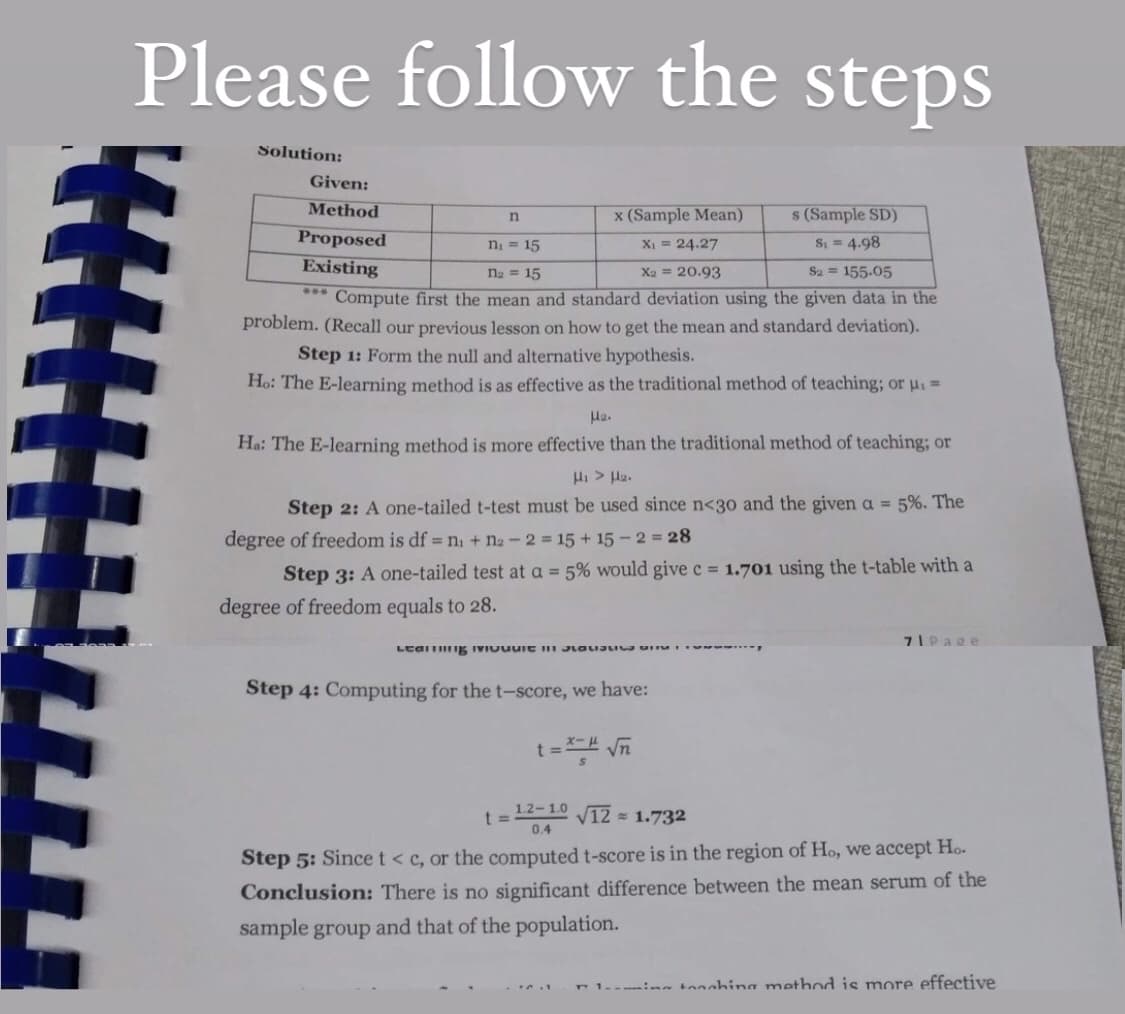Perform the test of hypothesis on the following scenarios. A brand of powdered milk is advertised as having a net weight of 250 grams. A curious consumer obtained the net weight of 10 randomly selected cans. The values obtained are 256, 248, 242, 245, 246, 248, 250, 255, 243, and 249 grams. Is there reason to believe that the average net weight of the powdered milk cans is less than 250 grams at 10% level of significance? Assume the net weight is normally distributed with unknown population variance. Note: pls follow the given steps in the photo attached
Perform the test of hypothesis on the following scenarios. A brand of powdered milk is advertised as having a net weight of 250 grams. A curious consumer obtained the net weight of 10 randomly selected cans. The values obtained are 256, 248, 242, 245, 246, 248, 250, 255, 243, and 249 grams. Is there reason to believe that the average net weight of the powdered milk cans is less than 250 grams at 10% level of significance? Assume the net weight is normally distributed with unknown population variance. Note: pls follow the given steps in the photo attached
Glencoe Algebra 1, Student Edition, 9780079039897, 0079039898, 2018
18th Edition
ISBN:9780079039897
Author:Carter
Publisher:Carter
Chapter10: Statistics
Section10.5: Comparing Sets Of Data
Problem 13PPS
Related questions
Question
Perform the test of hypothesis on the following scenarios.
A brand of powdered milk is advertised as having a net weight of 250 grams. A curious consumer obtained the net weight of 10 randomly selected cans. The values obtained are
256, 248, 242, 245, 246, 248, 250, 255, 243, and 249 grams. Is there reason to believe that the average net weight of the powdered milk cans is less than 250 grams at 10% level of significance? Assume the net weight is normally distributed with unknown population variance.
Note: pls follow the given steps in the photo attached

Transcribed Image Text:Please follow the steps
Solution:
Given:
Method
n
x (Sample Mean)
s (Sample SD)
Proposed
n₁ = 15
S₁ = 4.98
X₁ = 24.27
X₂ = 20.93
Existing
n₂ = 15
$2 = 155.05
*** Compute first the mean and standard deviation using the given data in the
problem. (Recall our previous lesson on how to get the mean and standard deviation).
Step 1: Form the null and alternative hypothesis.
Ho: The E-learning method is as effective as the traditional method of teaching; or μ₁ =
μ₂.
Ha: The E-learning method is more effective than the traditional method of teaching; or
με > Ma.
Step 2: A one-tailed t-test must be used since n<30 and the given a = 5%. The
degree of freedom is df = n₁ + n2-2=15+15-2 = 28
Step 3: A one-tailed test at a = 5% would give c = 1.701 using the t-table with a
degree of freedom equals to 28.
71Page
Lear IvIUuure лини
Step 4: Computing for the t-score, we have:
t=*= √n
t = 12-10√12 = 1.732
0.4
Step 5: Since t < c, or the computed t-score is in the region of Ho, we accept Ho.
Conclusion: There is no significant difference between the mean serum of the
sample group and that of the population.
1 tonahing method is more effective
Expert Solution
This question has been solved!
Explore an expertly crafted, step-by-step solution for a thorough understanding of key concepts.
Step by step
Solved in 2 steps with 1 images

Recommended textbooks for you

Glencoe Algebra 1, Student Edition, 9780079039897…
Algebra
ISBN:
9780079039897
Author:
Carter
Publisher:
McGraw Hill

Glencoe Algebra 1, Student Edition, 9780079039897…
Algebra
ISBN:
9780079039897
Author:
Carter
Publisher:
McGraw Hill